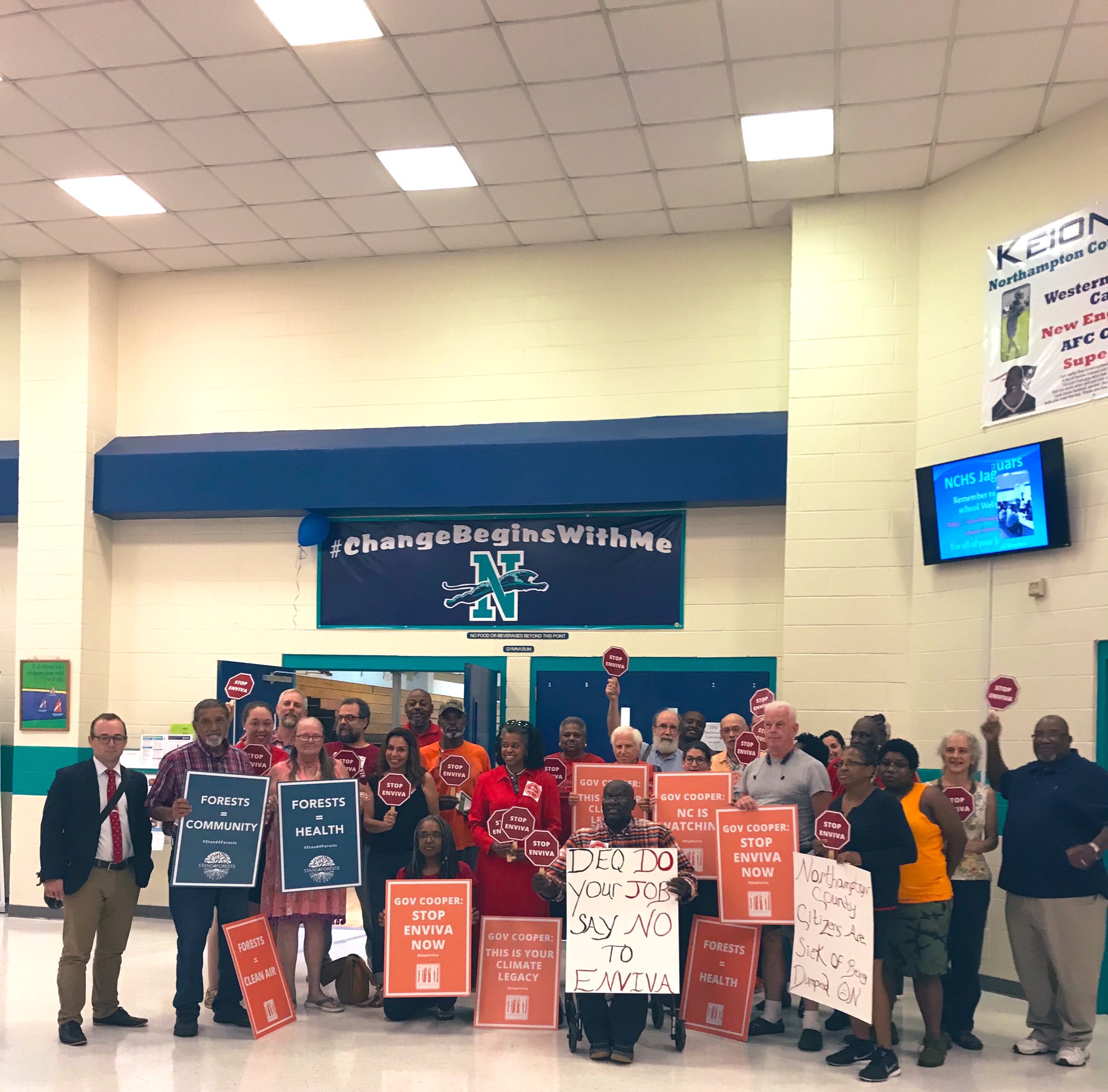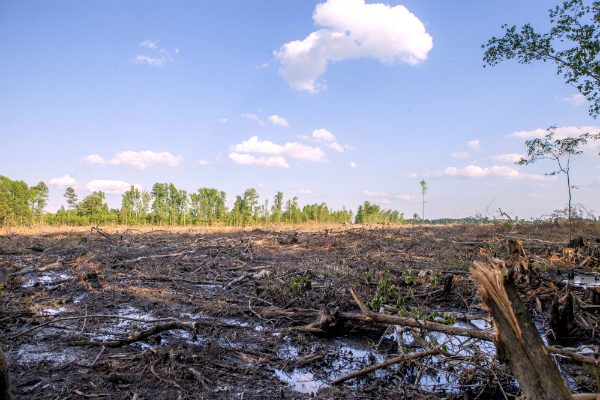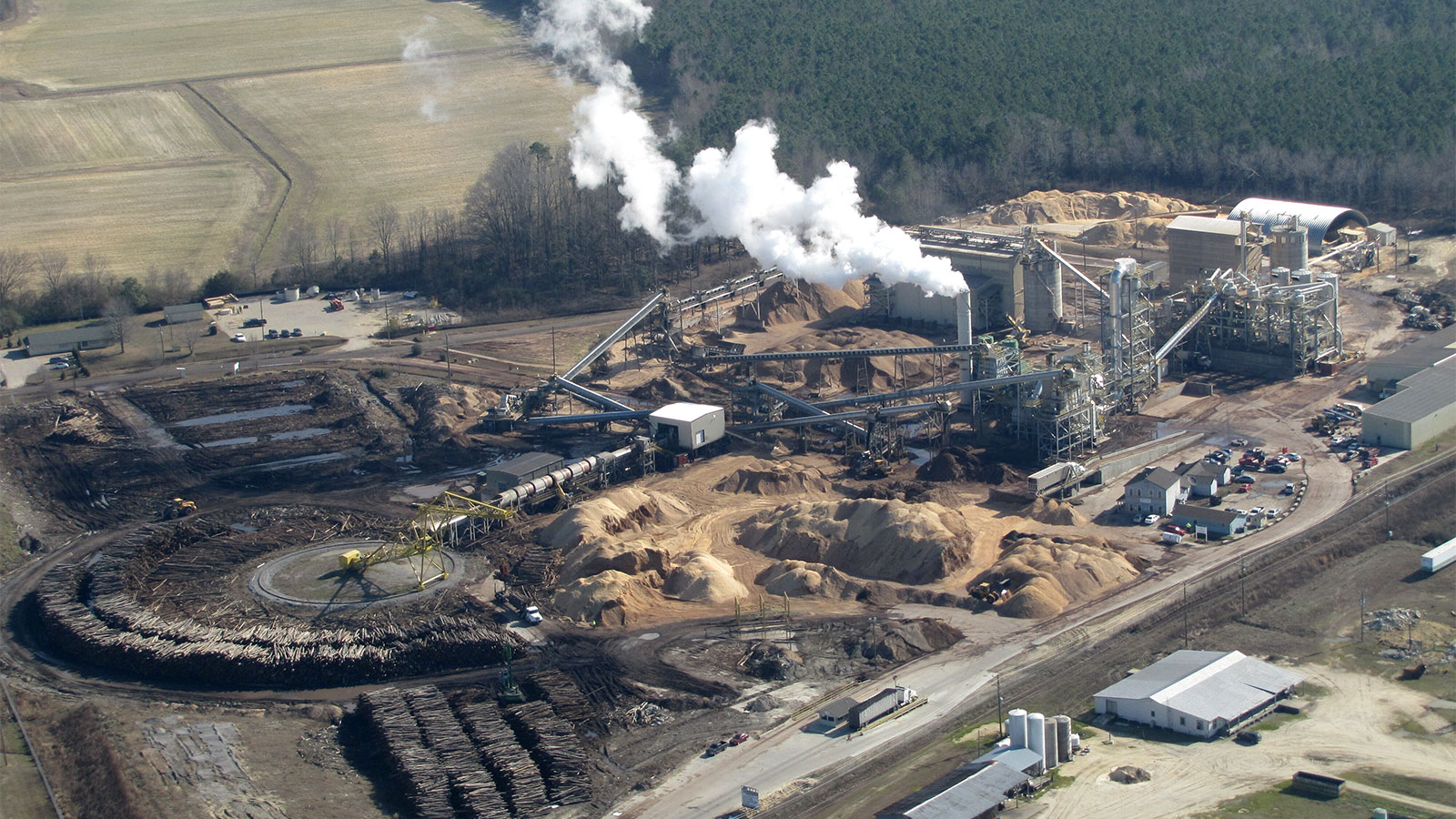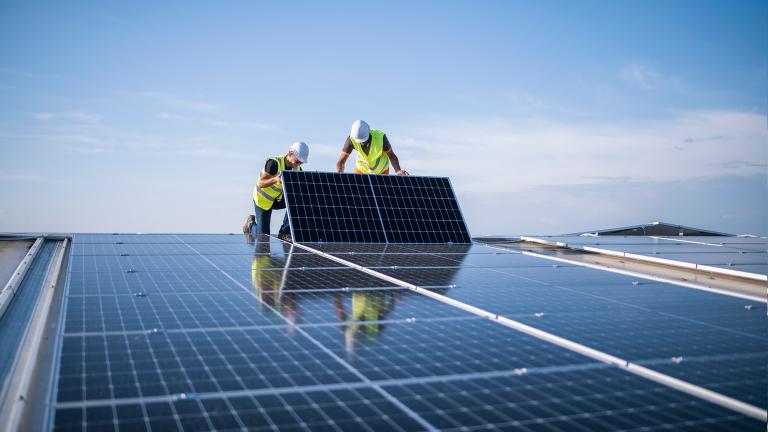Debra David has lived in Dobbins Heights, North Carolina, population 875, for more than 60 years. Though she has moved several times over the decades, she’s always lived close to the railroad and the town’s higher-traffic thoroughfares. But it wasn’t until very recently that she developed asthma.
In 2019 Enviva, a compressed wood pellet (also known as biomass) manufacturer, opened a new production plant in Hamlet, North Carolina, just down the road from David’s home. “I’d never had a problem with asthma before,” she says. “But the past two years, I started having it.”

And David isn’t alone — her entire neighborhood is experiencing the same health issues. “Of the eight houses on my block, every single one of them now has someone with asthma,” she says. “Four households now have breathing machines. We’re getting nosebleeds, headaches, and breathing problems now that we didn’t have before. All that’s happened since the plant opened.”
Heather Hillaker, an attorney with the Southern Environmental Law Center (SELC), has worked with communities impacted by wood pellet mills for years. She’s heard the same anecdotal stories of health issues correlating with new biomass plants often. “These mills are often built in low-wealth communities of color, and people say the same things over and over once the mills start operating: Their breathing issues or eye, nose, and throat irritation have increased,” she says. “The problem is that no one is tracking these health impacts.”

Hillaker and the team from SELC, along with the Environmental Integrity Project, helped David and other Dobbins Heights residents, through non-profit CleanAIRE NC, file a lawsuit to force the Hamlet plant to implement pollution monitoring and controls, reaching a settlement that, among other things, required the plant to install controls that would reduce the pollutants it emits by 95%. Enviva is now implementing those pollution controls on all its new plants.
But while this partially remedies the concerns of the communities impacted by wood pellet production, SELC continues to raise awareness about the other significant issues with the biomass industry as a whole to make sure they don’t remain unaddressed.
Climate Impacts
For decades, William Moomaw, a climate scientist affiliated with Tufts University, has helped shape global climate research and policy. He began focusing on the biomass industry in 2014 after learning about the devastation it wreaked on U.S. forests. “These companies claimed that they only use logging residues, but they were basically misrepresenting what they were doing,” he says. “I’ve seen the drone images. They were using mostly whole trees. They would say they were only using deformed or sick trees, but in fact, they took them all.” Investigations by news outlets ranging from the UK’s channel 4 news program to the Wall Street Journal have documented the same pattern of biomass companies sourcing from the clearcutting of U.S. forests to feed overseas demand.

Moomaw also disagrees with the biomass industry’s assertions that the wood pellets they produce are carbon-neutral based on the fact that new trees can grow to replace the ones they cut down. “The biomass companies will tell you that since the trees they’re cutting down will grow back, it’s carbon-neutral,” he says. “But that’s not completely true — if you are cutting down and burning a 25-year-old tree, it will take 25 years or more to grow back. So that tree they just cut down isn’t absorbing carbon over the 25 years, and all the carbon that tree had stored is released as soon as it’s burned.”
The United States’ biomass industry was built on promises that the companies would make wood pellets using waste from logging operations, such as wood chips, sawdust, or unusable branches, which led some European governments to categorize biomass as a renewable energy source. “They made some wrong assumptions that biomass would use waste wood to burn for energy,” says SELC attorney David Carr. “But a large volume of waste wood was never available. So now the only place to turn [to meet the demand] is to cut down trees.” Carr estimates that around 80% of Enviva’s wood pellet production comes from the cutting of living forests.
Indeed, the biomass industry has metastasized so quickly that companies are now cutting down trees across a swath of the Southeastern U.S., from Texas to the Atlantic Coast, to fulfill the demand for this unsustainable energy source. The plant near Debra David’s home is just one of the 23 currently operating large-scale wood pellet plants, and more are on the way. As of December 2021, 11 new wood pellet plants were at the proposal or construction stage in the U.S. — including two that, when completed, will be the largest in the world.

Driving this growth is a market across the ocean: Much of the biomass produced in the U.S. goes to the United Kingdom and the European Union. Because of a loophole in the international carbon accounting rules, countries importing biomass can designate it a “carbon-neutral” energy source. International carbon accounting rules only track the emissions when a tree is cut down. As a result, the CO2 emitted when it is burned for energy is unaccounted for in the official emissions tally of the country that imports the wood pellets.
The EU’s Renewable Energy Directive is another driver of the explosion in demand. The directive designated biomass as “carbon-neutral,” so European countries use wood pellets to meet their renewable energy goals, often instead of other truly renewable energy sources such as solar and wind. The U.K. is the largest importer of wood pellets due to huge subsidies from the U.K. government. SELC’s Carr estimates that the U.K. government spends more than £1 billion annually subsidizing the biomass industry — which may be the only reason the industry survives at all.
Moomaw points out that when states in the U.S. stopped subsidizing biomass for energy production after around 2009, many biomass companies closed up shop. “Burning wood to make electricity is more expensive than any other source except for nuclear power,” he says. “The industry would not be viable if it were not subsidized.”
And any solution to this issue relies on changes to government policy. Carr says, “Most people know that trees store carbon. The idea that you would cut down trees and burn them to address climate change just makes no sense. It’s hard to believe that governments have gone down this road.” He and the other attorneys at SELC are working with international partners to shift the biomass subsidy policies of the U.K. and other major importers, an effort requiring time and patience.
Despite the slow response on the government end of things, SELC’s work has led to a groundswell of public awareness about the issues with biomass as an energy source. In addition to lawsuits to help the communities impacted by wood pellet plants, SELC, along with several partners, continues to launch petitions and digital campaigns about the biomass issue. The latest petition, called “Cut carbon not forests US,” urges President Biden to commit to energy sources that are truly clean. SELC is also working with communities and partners to highlight the issue in the media and lobbying the U.S. government to ensure it does not begin promoting biomass as clean energy.
At the end of the day, Moomaw says the fundamental flaws in the biomass industry are obvious. “When that tree that was cut down 25 years ago grows back, the glacier doesn’t refreeze, and the sea level doesn’t go back down,” he says plainly. “Even if something is eventually carbon-neutral, it’s not climate-neutral. It’s causing irreversible changes.”
Southern Environmental Law Center is dedicated to protecting the basic right to clean air, clean water, and a livable climate; to preserving the region’s natural treasures and rich biodiversity; and to providing a healthy environment for all.




